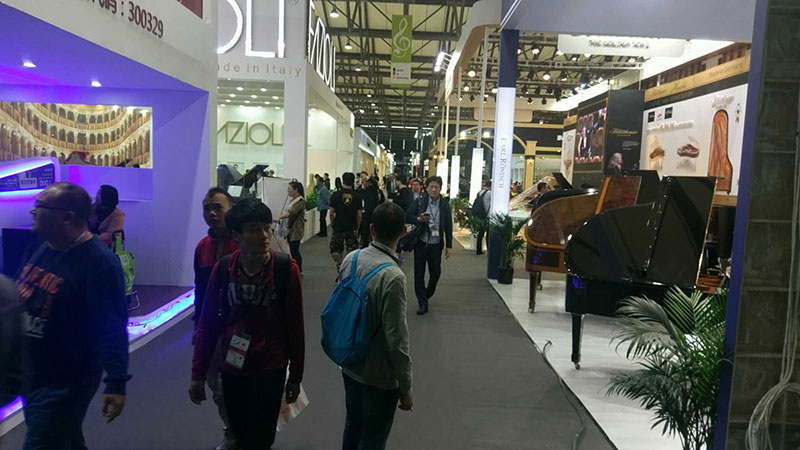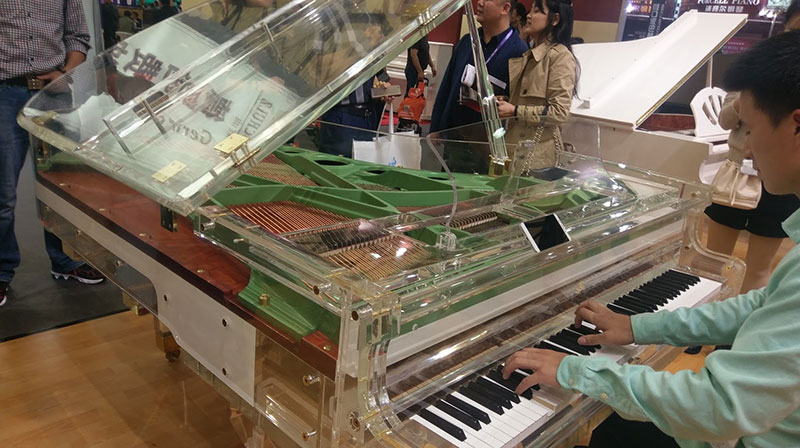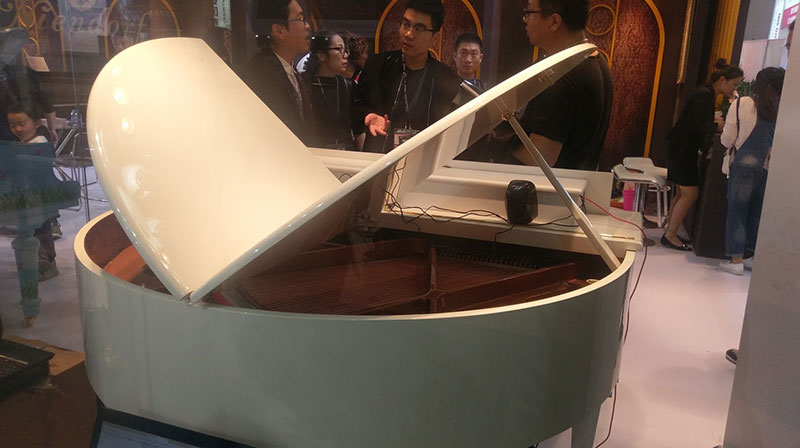You probably know that the hammers are responsible for striking the strings on the piano and producing a sound. The dampers are the pieces of wood covered with felt that lie above the strings and are responsible for ending notes.
When you play a note on the piano the damper comes up so the hammer can strike the string and make a tone. When you let go, the damper falls back onto the string and mutes the sound. You might notice that when you hold down the damper or sustain pedal (the one on the right), all the dampers are released and will remain raised until you take pressure off the pedal leaving the strings free to vibrate and produce a long lasting tone.
When you press the damper pedal and all the dampers remain raised, it will make the tone echo inside the piano because of sympathetic vibrations. If you want to have some fun, try holding down the damper pedal and singing into your piano – the sound of your voice will echo around the piano for quite some time; it’s a fun trick you can share with family or friends.
The important thing about this is that you can affect the tone of a melody by using the pedal and keeping the dampers raised. When you play with the sustain pedal down you will get a much fuller tone.
What you might not know is that the sustenuto pedal, the middle pedal is a selective sustain pedal when it comes to dampers. When you depress some keys then press down and hold down the sustenuto pedal, the dampers above only those notes will remain raised. If you play other notes while continuing to hold down the sustenuto pedal, the dampers of new notes will respond like normal and fall back onto the strings once you let go of those keys even though the sustenuto pedal will continue allowing the original notes to sound. This is useful in music which would require 3 hands to play otherwise.
Generally, dampers will do what they are intended to do or not. That is to say, when they are down they should end a note and when they are up they should let a note sustain. If you have ever had notes hang up – keep playing after you let go of the keys and pedals, then you are in need of damper regulation to get them working correctly again. Damper regulation may be required if you hear buzzing at the end of notes. Dampers can be regulated but sometimes the felt becomes old, hard, and worn out and must be replaced in order to function properly. This is a very common problem on older pianos however, it can be fixed with the right technician.
One thing you might have noticed is that there are no dampers above the highest notes on the piano. You might wonder if this is a mistake or something intentional. The fact is, most of the notes that don’t have dampers simply don’t need them – they are not able to sustain long enough to necessitate dampers. The first note that has no damper is usually the 2nd to highest E on the piano. Sometimes on a very fine piano, notes in this register can last a very long time; without dampers there is really nothing you can do about this.
I hope this clarifies some aspects of this important part of the piano. Thanks for reading and watching and as always I welcome additional questions and comments.














